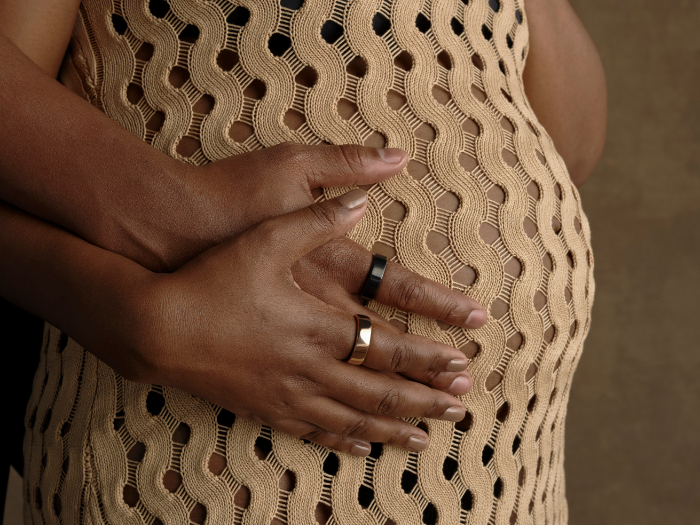Mothers-to-be experience some incredible changes throughout their nine months of pregnancy. As the body adapts to accommodate a growing baby, sleep patterns and health markers change, too.
Oura’s Science team collected aggregate and anonymized member data to learn more about how pregnant women’s biometric markers change. Through analysis, clear patterns emerged in the members’ heart rate, heart rate variability (HRV), body temperature, and respiratory rate trends — in line with existing research.
Using these patterns, Oura’s data, science, and product teams have created a new way to track and understand your pregnancy with Oura: Pregnancy Insights. With this new feature, you can track how far along you are in your pregnancy (your gestational age), and get weekly updates about the physiological changes you may experience and see in your Oura data.
Below, learn more about the sleep and biometric patterns that Oura member data reveals during each trimester, including the “fourth.”
READ MORE: Pregnancy Insights: Track and Learn More About Your Pregnancy With Oura
What Happens to Your Body During Pregnancy?
A lot, to say the least! When you’re expecting, your body goes through a miraculous transformation. After all, you’re growing a whole new life.
As your body changes, so will your Oura biometrics — the physiological data points tracked by Oura, including your HRV, heart rate, respiratory rate, and body temperature trends.
These biometrics are directly influenced by the changes your body goes through in order to support fetal development. For instance, your increasing blood volume, cardiac output, and metabolic rate contribute to changes in your heart rate and body temperature.
“Remember, you can expect daily fluctuations in your vitals throughout your pregnancy,” says Neta Gotlieb, PhD, Women’s Health Product Manager at Oura and clinical research scientist. “This is perfectly normal! Every day may look or feel different during your pregnancy, while long-term trends can give you a better indication of how your body changes while carrying a new life.”
| Member Tip: Use the Trends view in your Oura App to track changes in your biometrics over the days, weeks, and months of your pregnancy. |
The First Trimester
Changes in Sleep
It’s common to spend more time awake and have more nightly wake-ups during the first trimester. But that doesn’t mean you’re actually getting less sleep.
In fact, Oura member data shows during the first trimester, total sleep increases by about 20 minutes, on average. Why? “This is because they’re spending more time in bed,” Gotlieb explains.
Patterns in Oura Members’ Data in the First Trimester
| Biometric | Change |
| Body temperature trend | Increases right after conception |
| Respiratory rate | Increases |
| Heart rate | Spikes after conception, then slightly decreases |
| HRV | Drops after conception, then increases |
What Else to Expect
- Daytime sleepiness: Progesterone plays a crucial role in maintaining the uterine lining for the embryo’s implantation and early development. However, the rapid rise of this hormone can also have a sedative effect, making you feel sleepy during the day.
- More frequent urination: Estrogen levels rise to help your body to produce more blood. This may also cause you to experience heightened thirst and an increased need to urinate, which can disrupt your sleep.
- “Morning” sickness: Up to 80% of women experience nausea or vomiting in the first trimester. Contrary to the name, morning sickness can strike at any time of the day or night. A study found that women who experience nausea or vomiting have increased night awakenings, daytime fatigue, early morning awakenings, and difficulty falling asleep.
READ MORE: Tired But Can’t Sleep? Here Are 5 Possible Reasons Why
| Member Story: During her second pregnancy, Laura turned to Oura to detect her pregnancy, plan her active days, and stay more in touch with her body. |
The Second Trimester
Changes in Sleep
Nighttime wakeups continue into the second trimester. Oura data shows a slight decrease in total time asleep, while many members spend more time in REM sleep due to rising levels of estrogen.
Patterns in Oura Members’ Data in the Second Trimester
| Biometric | Change |
| Body temperature trend | Decreases |
| Respiratory rate | Decreases |
| Heart rate | Steadily climbs |
| HRV | Steadily decreases |
What Else to Expect
- More stable energy: Your hormones are still changing in the second trimester, but less drastically than in the first and third, so your energy levels may improve. You might nap less during the day and find it easier to go to sleep at night.
- Trouble getting comfortable: Relaxin is a hormone released in early pregnancy, peaking at the start of the second trimester. Relaxin, as the name implies, softens the ligaments and tissues in the pelvis to allow for easier childbirth and an outward displacement of the hips. This increased joint flexibility can lead to aches and discomfort, particularly at night.
- Vivid dreams: Dreams happen during REM sleep, which may increase in the second trimester due to rising levels of estrogen. While nightmares can occasionally disrupt your sleep, dreaming also delivers benefits, helping you regulate emotions and even reduce stress.
The Third Trimester
Changes in Sleep
By the third trimester, time awake may further increase by about 10 minutes on average, according to Oura member data, leading to a decline in total sleep duration.
Patterns in Oura Members’ Data in the Third Trimester
| Biometric | Change |
| Body temperature trend | Remains steady with a spike right before birth |
| Respiratory rate | Stays relatively stable |
| Heart rate | Continues to climb, with a slight decrease a few weeks before birth |
| HRV | Continues to lower, then climbs slightly a few weeks before birth |
What Else to Expect
 Difficulty sleeping: Around 64% of mothers-to-be experience insomnia in the third trimester, while 98% of women report waking up more during the night. Poor sleep can impact your mood and energy during the day.
Difficulty sleeping: Around 64% of mothers-to-be experience insomnia in the third trimester, while 98% of women report waking up more during the night. Poor sleep can impact your mood and energy during the day. - Increased stress and anxiety: One study found that 88% of women had moderate anxiety about childbirth in the third trimester. To counter this, try to integrate some stress-relieving practices such as breathwork or meditation. Recent research using Oura and Headspace shows that these techniques can reduce feelings of anxiety in general and around pregnancy.
- “Nesting” and anticipation: “Nesting” in pregnancy refers to an instinctual urge to prepare your home and environment for your baby, and it peaks in the third trimester. This feeling of anticipation and excitement can give you more energy, but remind yourself to take breaks and avoid overdoing it!
The “Fourth Trimester”
Changes in Sleep
According to Oura member data, the total time asleep slowly but surely starts to rebound after birth — hooray! However, there is a big spike in awake time around the time of birth and immediately after.
Postpartum Patterns in Oura Members’ Data
| Biometric | Change |
| Body temperature trend | Lowers after birth |
| Respiratory rate | Lowers |
| Heart rate | Lowers |
| HRV | Rises |
What Else to Expect
- 24-7 baby care: Newborns need to be fed every two to four hours for the first few weeks. After being fed, new parents may also find it difficult to get them back to sleep — or go back to sleep themselves! These challenges all lead to less sleep for new parents.
- Mood changes due to dropping hormone levels: There’s a sudden decline in estrogen and progesterone levels after you give birth, which impacts mood and motivation. This can cause some new moms to feel sad, frustrated, anxious, or lethargic. These changing hormone levels can also cause night sweats and postpartum insomnia. If negative symptoms become more intense and last longer than a few weeks, talk to your medical provider.
- Time to bond: With the baby finally here, many parents do skin-to-skin, contact naps, or breastfeeding, in order to bond with their baby. These activities release oxytocin – the love hormone – in both the parent and infant.
- New coping strategies: These changes can be overwhelming, especially for first-time parents. That’s why it’s crucial to ask for help and support when you can, Gotlieb notes. Accept a neighbor’s offer to bring over dinner, ask your partner to fold the laundry while you nap, and seek out supportive communities of other new parents.
READ MORE: Sleep 101 for New Parents
Visualizing Biometric Trends by Trimester
Heart Rate Variability
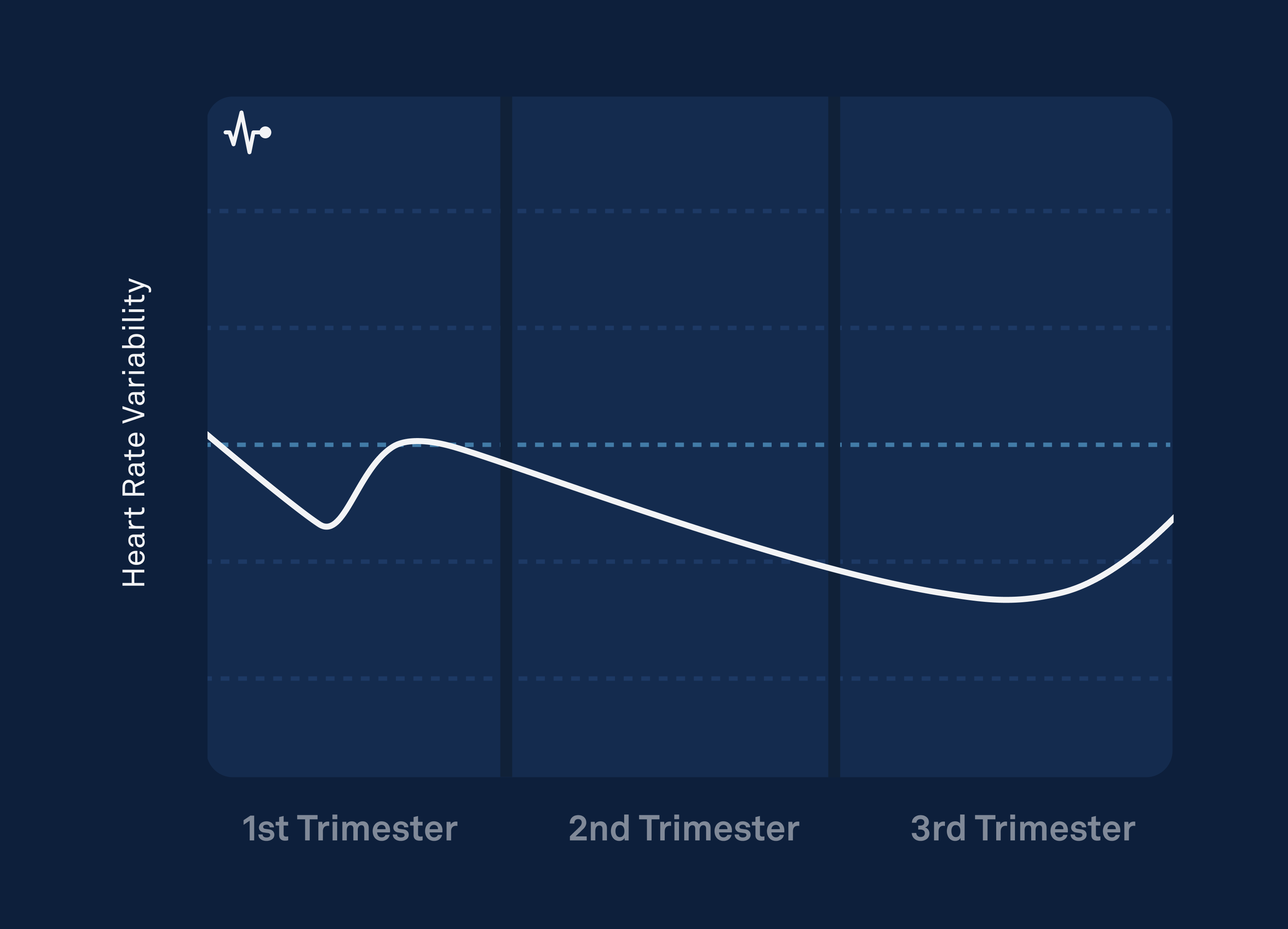
HRV tends to drop after conception, followed by a small incline in the first trimester. HRV then steadily decreases until a few weeks before birth when it climbs.
Heart Rate
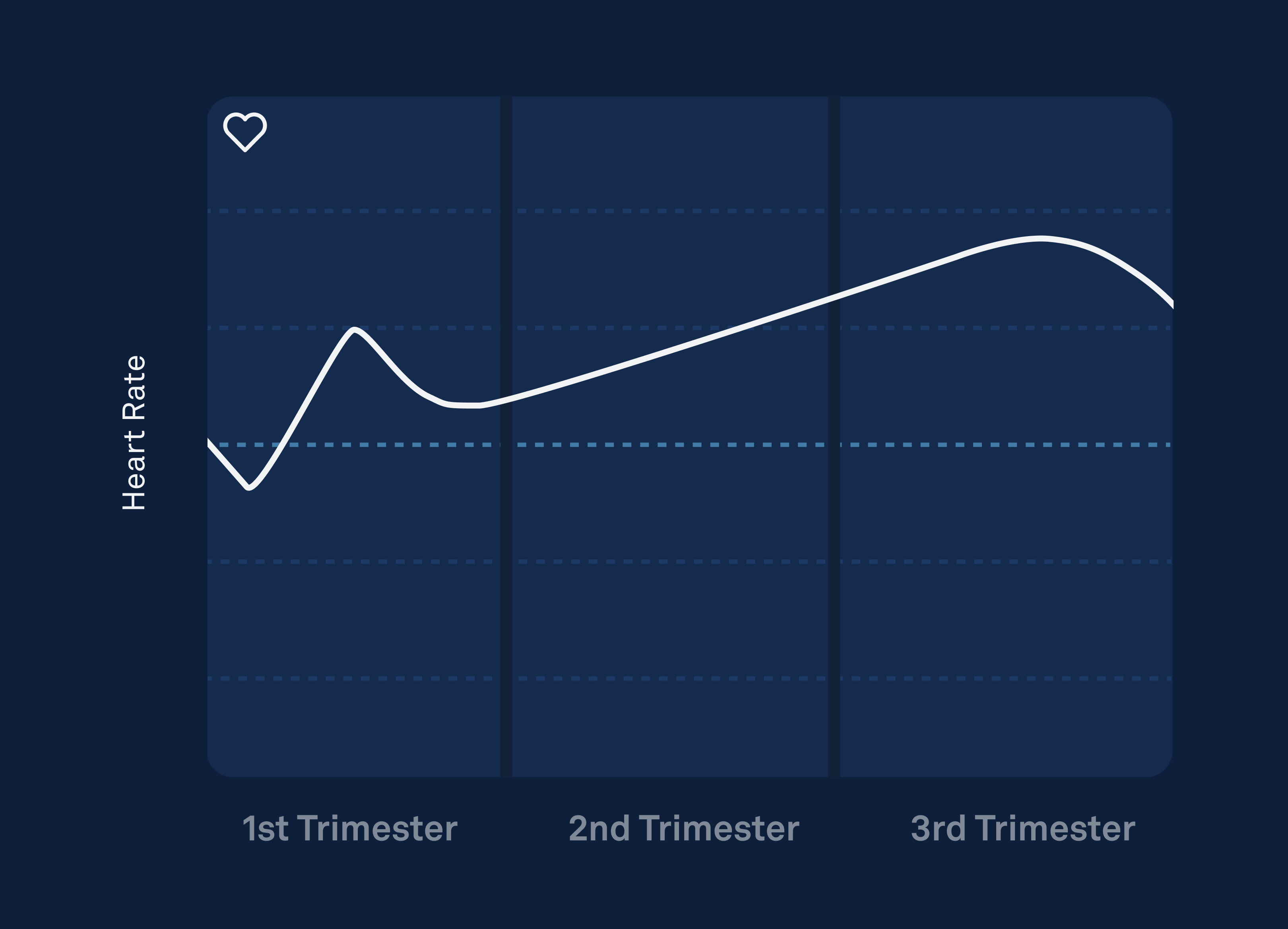
Heart rate typically spikes after conception, then slightly decreases. It usually climbs steadily until a few weeks before birth when it again decreases.
Respiratory Rate
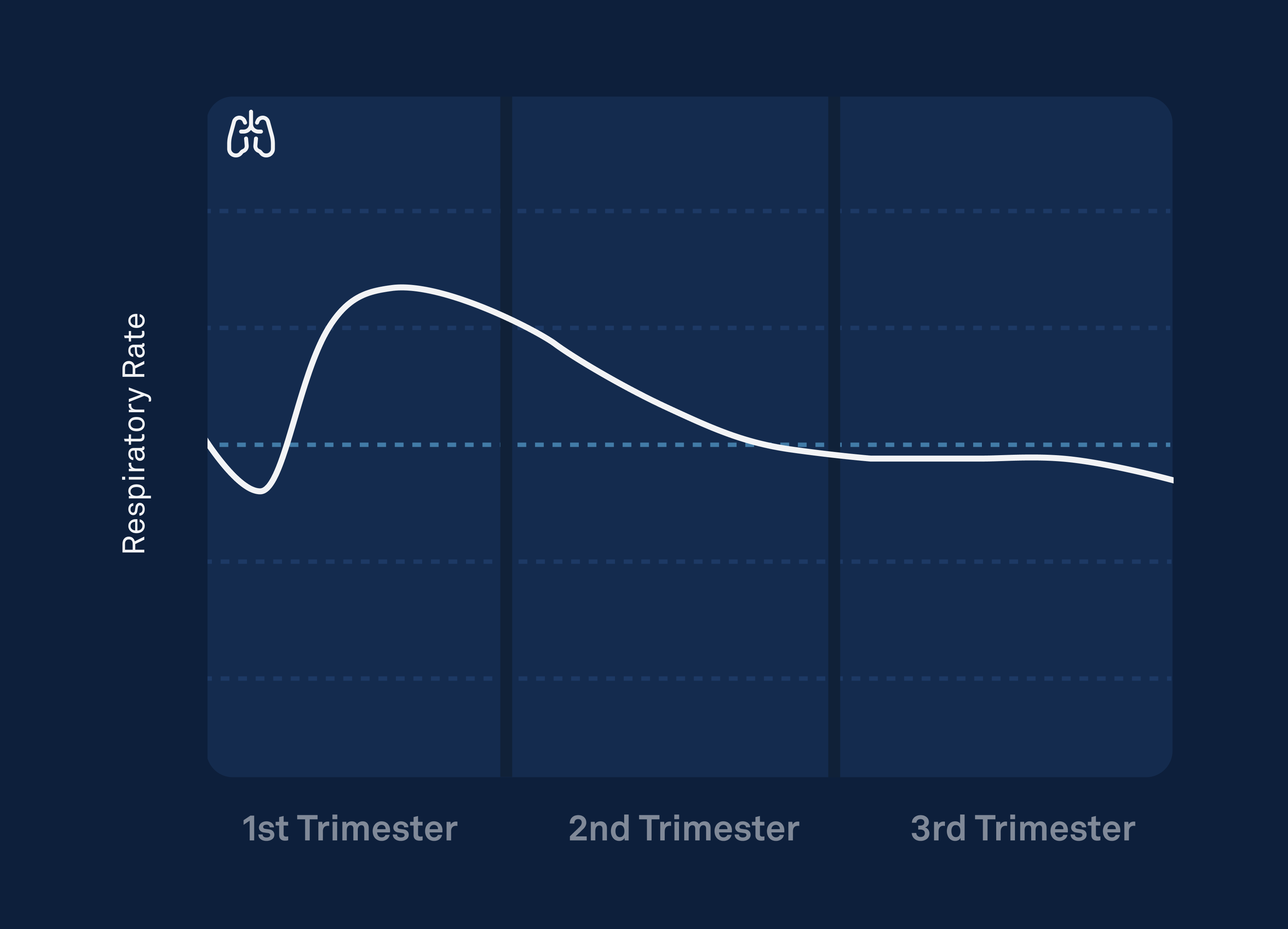
Respiratory rate typically increases in the first trimester and decreases in the second trimester. During the third trimester, the decreased respiratory rate usually stays stable.
Temperature Trend
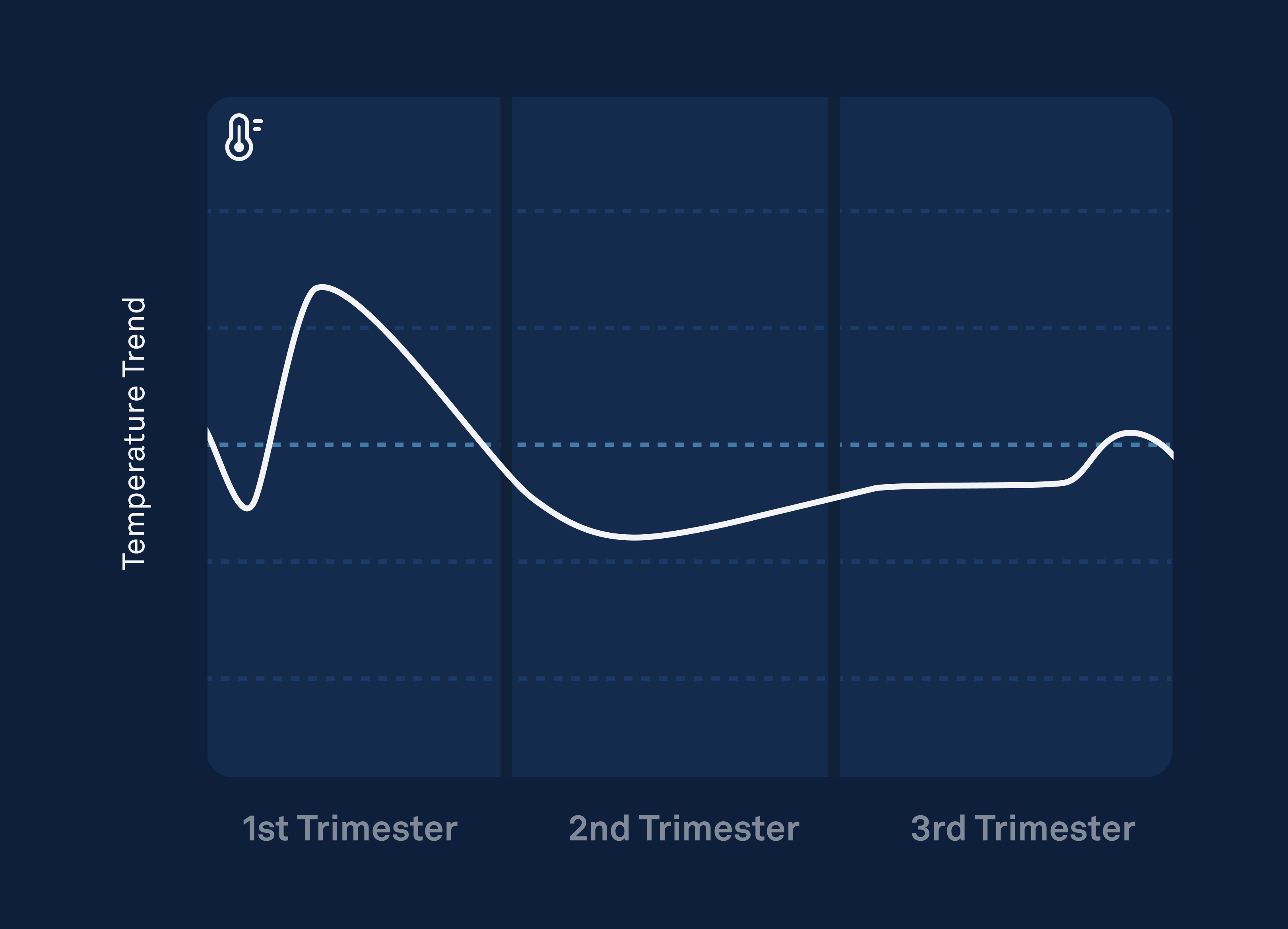
Body temperature trends tend to increase in the first trimester after conception. It typically decreases in the second trimester, then remains steady in the third with a spike right before birth.
About the Oura Expert
Neta Gotlieb, PhD, is a Product Manager and former Lead Clinical Research Scientist at ŌURA researching and developing solutions focused on women’s health. Dr. Gotlieb received her Master’s degree from Tel Aviv University in Biological Psychology where her work focused on how stress impacts immune function and endocrine pathways. She earned a PhD from UC Berkeley where she studied Reproductive Neuroendocrinology and the circadian regulation of menstrual cycles, pregnancy, and birth. Recipient of the Women in Tech Global Technology Leadership Award and Women of Wearables’ Trailblazing Leaders in Women’s Health and FemTech.










